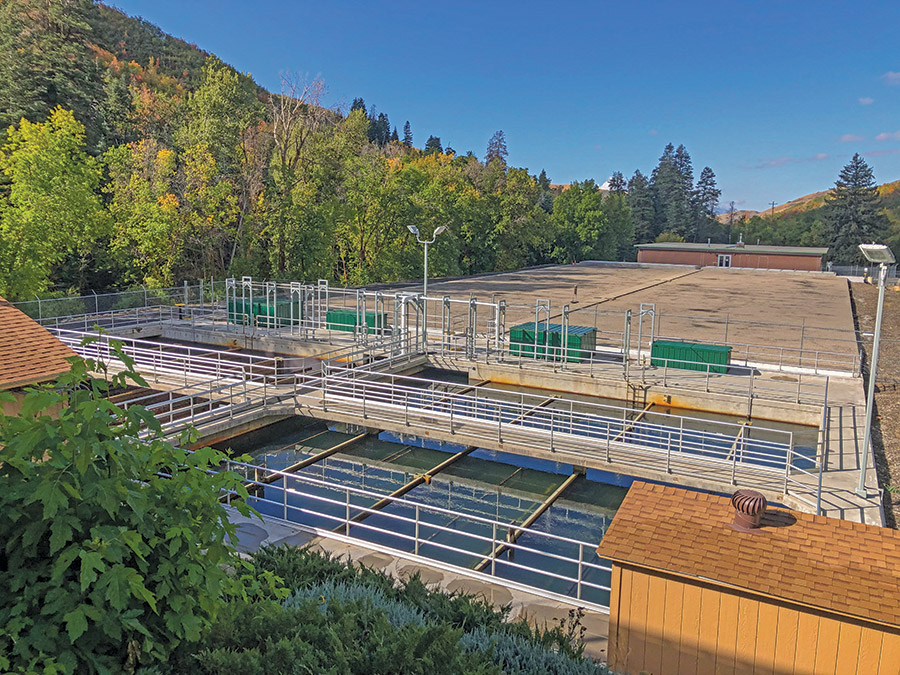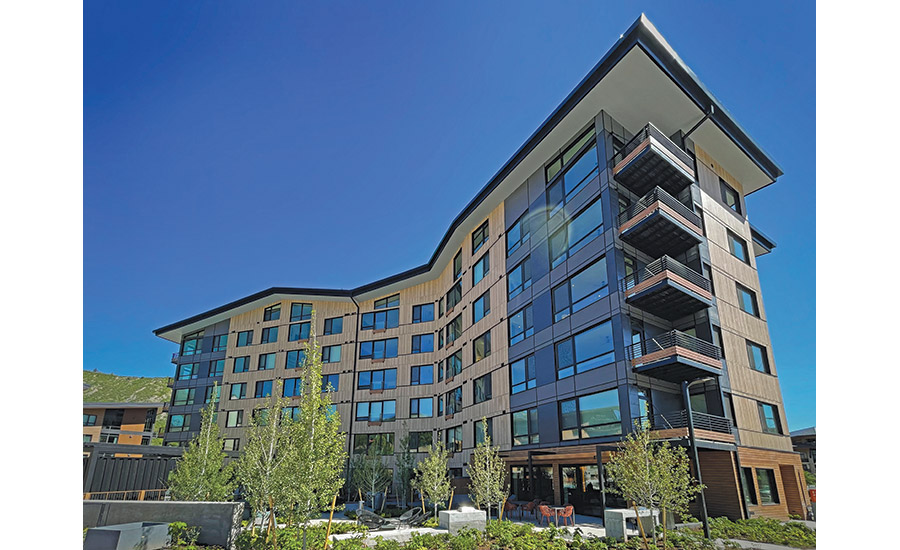Related Link:
ENR Intermountain 2023 Top Contractors
ENR Colorado/Wyoming/
Dakotas 2023 Top Contractors
Mountain States contractors continue to ride the wave of a busy 2023 market despite chatter of an economic slowdown. For example, the top 25 companies with the highest revenue totals from both Top Contractors lists reported revenue of $13.58 billion in 2022, up from $13.1 billion the previous year.
That is also a significant increase from pre-pandemic levels—revenue for the region’s top 25 firms was approximately $10.7 billion in 2019.
ENR annually complies two lists for the Mountain States—one for contractors working in Colorado, Wyoming and the Dakotas and one for construction firms in the Intermountain area that includes Utah, Idaho and Montana. The average revenue reported by general contracting firms across the seven-state region was $318 million for 2022, a healthy jump from the $252.9 million firm average in 2021.

The existing flocculation and sedimentation basins of the City Creek Water Treatment Plant in Salt Lake City were constructed more than 60 years ago. Haskell will demolish this existing footprint and build a $95-million water treatment plant in its place.
Photo courtesy Haskell
“The limitations for contractors have been private owners’ ability or willingness to finance projects within the current lending market.”
—Joey Gilbert, President & CEO, AGC of Utah
“We are seeing the market tighten as interest rates and construction costs increase; however, Colorado has performed better than the industry average throughout the past two years, making us optimistic that we will not see the steep decline that some of the markets are projected to have,” says Eric Blanke, Haselden Construction’s vice president for business development.
The Centennial, Colo., firm is ranked No. 8 on this year’s list, up from 14th on last year’s ranking. The contractor’s growth was due, in part, to a substantial increase in behavioral health work, along with an expansion into the multifamily market with its subsidiary, Haselden Builders, the company says.
Construction activity continues to be robust throughout Utah and the Intermountain states as well, says Joey Gilbert, president and CEO of AGC of Utah.
He predicts a healthy demand for construction projects on the heels of the state’s “great legislative session with funding for transportation, state building projects and water conservation efforts.”
“We see no signs of slowing in 2023,” adds Bryan Bedell, Haskell vice president and division leader for water projects in Salt Lake City.
The contractor’s infrastructure projects, especially water and wastewater treatment facilities, are experiencing significant growth, and this activity helped the firm climb three places from last year’s rankings to take the No. 14 spot on the Intermountain list.
Shifting Markets
A flurry of ongoing activity notwithstanding, contractors say markets are shifting to a more competitive landscape as fewer projects are being released. Bedell points out that projects that thrived during the pandemic, including comfort food options, are seeing some market softening as well.
And while many pandemic-related supply chain challenges have eased, some are still creating significant issues. “The electrical switchgear and standby generators lead times are two and three times longer than pre-pandemic,” Bedell says.
“The limitations for contractors have been private owners’ ability or willingness to finance projects within the current lending market,” AGC’s Gilbert adds.
“Private development projects such as offices and retail are declining as the cost of money makes these jobs much harder for the pro formas to pencil,” Blanke says.
In the education sector, limited bonds are contributing to a slowdown in K-12 projects while higher education continues to draw high numbers of bids.
Ongoing Labor Woes
Looking ahead, Blanke says: “Over the next four years, the industry is projected to be short by tens of thousands of craft positions, creating a huge hurdle for contractors.” Regionally—and nationally—the lack of labor resources is already creating challenges, with skilled labor especially difficult to find. The worker shortage is contributing to the rise in labor rates and, in turn, affecting overall project costs.




Post a comment to this article
Report Abusive Comment